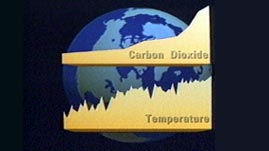There was once a great debate about whether or not the Earth is warming, but the evidence now has scientists convinced. Since the start of the Industrial Revolution in 1880, the average temperature of the planet has increased by just over one degree Fahrenheit, currently standing around 60°F. This seemingly insignificant change represents a fairly rapid warming trend. According to the UN-sanctioned Intergovernmental Panel on Climate Change (IPCC), the Earth's inhabitants will be facing temperatures at least three, and as much as ten, degrees warmer by the end of the twenty-first century.
To put this into perspective, consider the temperature difference between now and the last ice age (about twenty thousand years ago): nine degrees Fahrenheit. If the IPCC's predictions hold, that same temperature change will happen within the next one hundred to three hundred years. Natural cycles of warming and cooling usually take tens of thousands of years, not hundreds. So what's going on?
To understand global warming, you must first understand why our planet is warm in the first place. The Earth's surface warmth is due to an atmospheric process called the greenhouse effect. In the blanket of molecules (solids, liquids, and gases) that forms our atmosphere, certain gases are responsible for warming the planet. These gases act much like the glass of a greenhouse, letting sunlight in while preventing heat from escaping, and for this reason they are called greenhouse gases. The most important (and naturally occurring) greenhouse gases are water vapor (H2O), carbon dioxide (CO2), methane (CH4), and nitrous oxide (N2O). For most of the Earth's 4.6-billion-year history, greenhouse gas concentrations (and temperatures) have followed a complex pattern of ups and downs, as the Earth cycled through warm periods and ice ages. But for the past nine thousand years, temperatures have been unusually stable. Some scientists believe this stability was essential to the development of human civilization.
But since the Industrial Revolution, human activities have sent more and more greenhouse gases into the atmosphere. Burning wood and fossil fuel (gas, coal, and oil) adds carbon dioxide; livestock and coal production add methane; and agricultural and industrial processes add nitrous oxide. In addition, manmade CFCs and related compounds, once widely used as propellants and refrigerants, have also contaminated the atmosphere. (In a separate and unrelated process, CFCs destroy ozone, a critical atmospheric gas that filters out ultraviolet [UV] radiation.) Fortunately, CFCs are no longer produced by the industrialized world.
Oceans and land plants can absorb only half of the excess greenhouse gases; the rest accumulates in the atmosphere, where it strengthens the greenhouse effect and may cause climate instability. The National Academy of Sciences just reported that the addition of greenhouse gases and other pollutants to the atmosphere can cause abrupt, severe climate changes. Case in point: El Niño events are becoming more frequent and more severe. Scientists can't predict all the consequences of increasing greenhouse gas concentrations in the atmosphere, but they've got their eyes on the sky and will be watching closely for changes.

 Loading Standards
Loading Standards Teachers' Domain is proud to be a Pathways portal to the National Science Digital Library.
Teachers' Domain is proud to be a Pathways portal to the National Science Digital Library.
